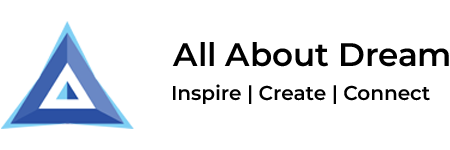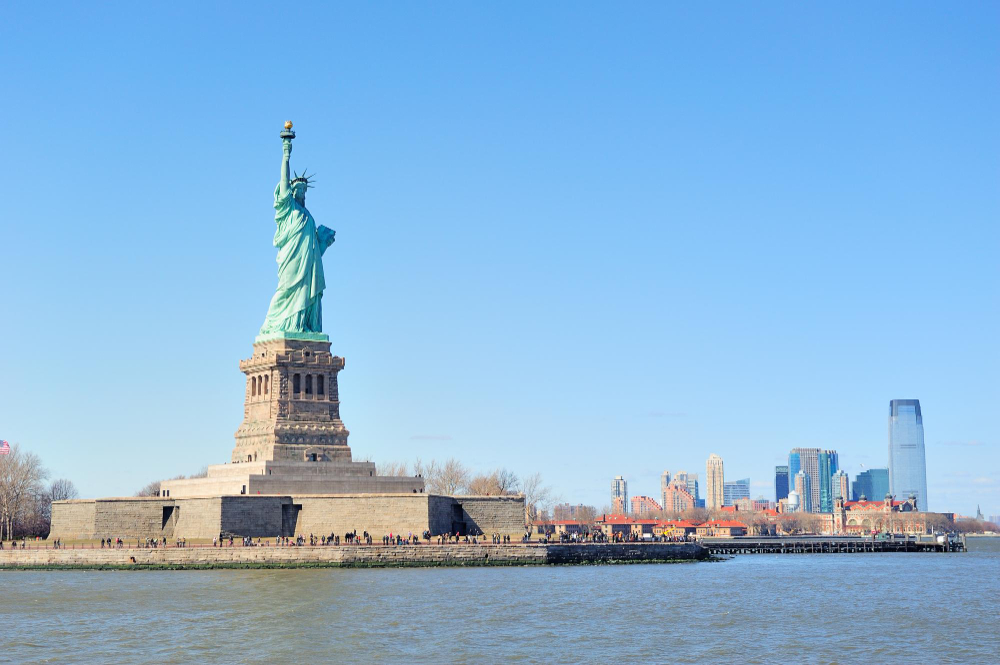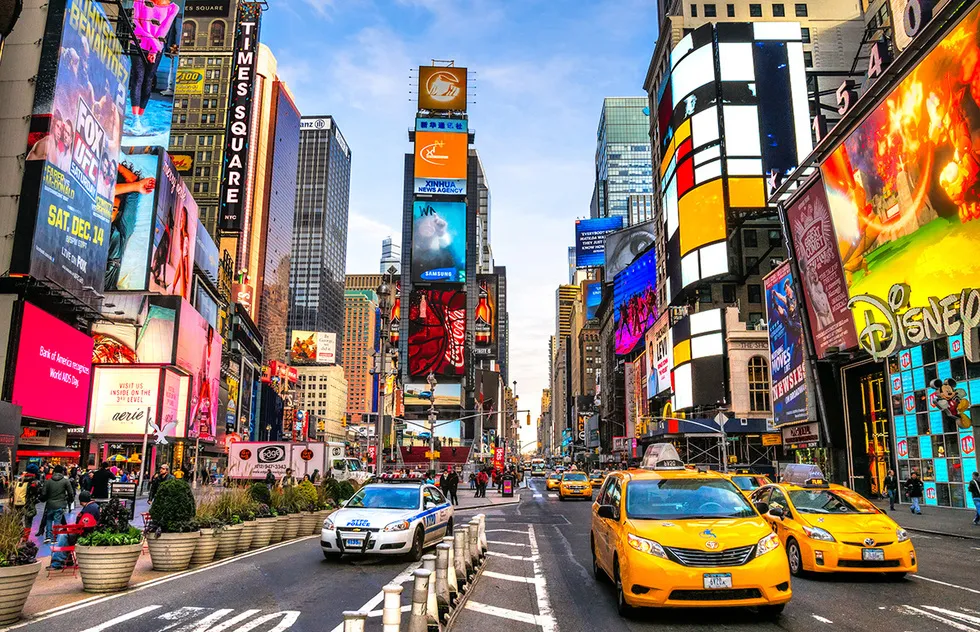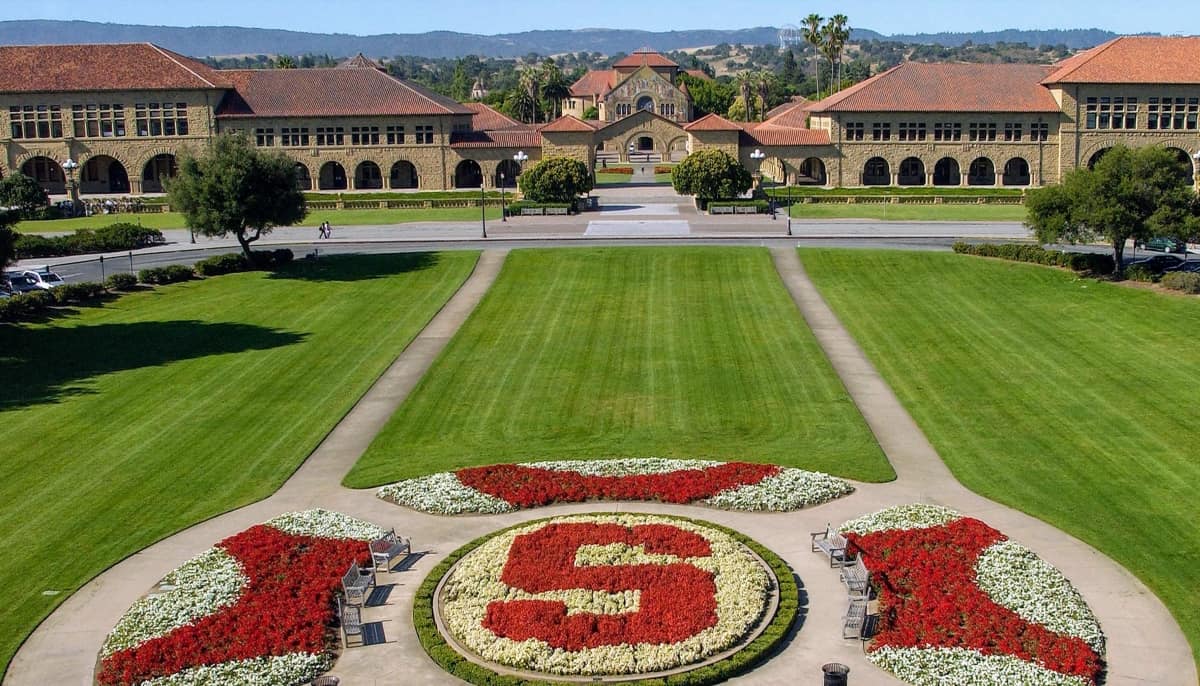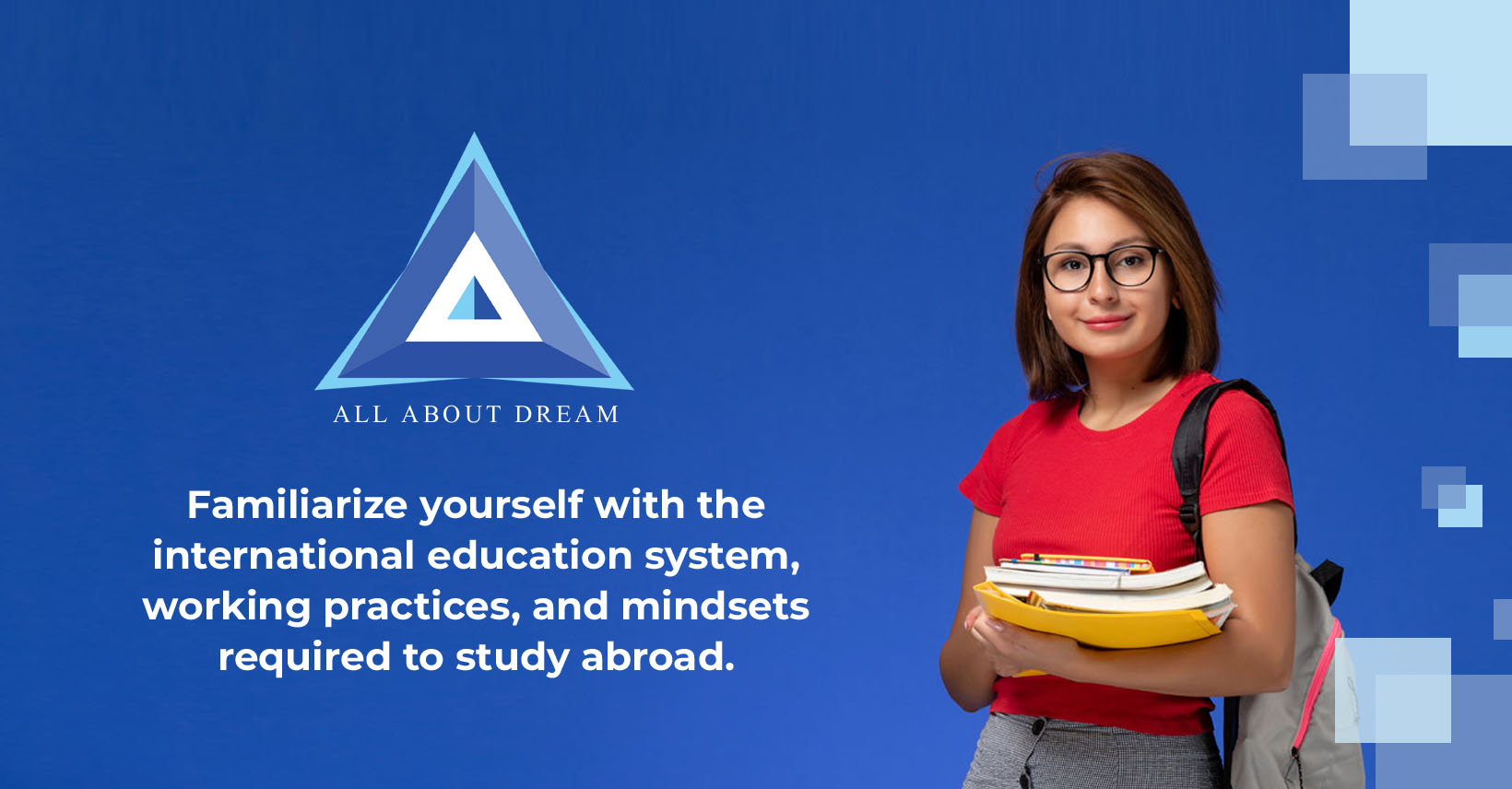About
The United States of America (USA) is a federal republic located in North America, recognized as the third-largest country in the world by both land area and population. With over 331 million residents, the USA is a melting pot of cultures, languages, and traditions. It comprises 50 states, each offering a unique blend of history, culture, and geography. Major metropolitan areas like New York City, Los Angeles, Chicago, Houston, and Phoenix serve as cultural and economic hubs, while cities like Boston, Seattle, Miami, and Washington, D.C., provide rich academic and professional environments.
The USA boasts the largest economy globally, driven by industries such as technology, finance, manufacturing, and agriculture. The country's advanced infrastructure supports its economic prowess, with extensive networks of roads, railways, airports, and seaports facilitating seamless connectivity and transportation.
A hallmark of the USA is its cultural diversity, resulting from centuries of immigration. This diversity is a strength, fostering a rich tapestry of ethnicities and religions. The ethos of individualism and entrepreneurial spirit is deeply ingrained in American culture, making it an inspiring place for students to explore and thrive.
The USA is often called the "land of dreams," embodying the American Dream—the belief that hard work and determination can lead to success regardless of one’s background. This aspirational ideal has drawn millions to the USA, making it a beacon of opportunity for those seeking to achieve their academic and professional goals.
For students, the USA offers a myriad of opportunities to pursue education, research, and personal growth. The country’s diverse population, coupled with its robust academic institutions and vibrant economy, provides an enriching environment for learning and development.
Education System
The United States boasts one of the world's most prestigious education systems, offering exceptional programs across virtually all fields of study. At the undergraduate level, students can choose from a wide array of disciplines, including traditional fields and professional studies. Graduate students have the privilege of collaborating with some of the brightest minds in their respective areas, gaining access to exclusive research opportunities and state-of-the-art educational resources. U.S. degrees are globally recognized for their quality and rigor.
A Hub for International Students:
The USA is a top destination for international students, with over 4,000 universities and colleges offering a broad spectrum of academic programs and research opportunities. Studying in the USA provides access to world-class institutions and cutting-edge technology, enhancing students' educational experiences. The emphasis on research and innovation means students can engage with the latest advancements and methodologies in their fields.
Technological and Research Excellence:
American universities are known for their commitment to staying at the forefront of technology and research. Students, regardless of their discipline, benefit from the best available resources and equipment, ensuring they gain practical experience with the latest tools. This exposure prepares them for global competitiveness in their careers.
Diverse Campus Life:
Whether attending a small college in a quaint town or a large university in a bustling city, students in the USA can participate in a variety of clubs and organizations that reflect their interests. These opportunities help students immerse themselves in American culture, build lasting friendships, and develop a well-rounded academic and social life.
Structure of the Education System:
The U.S. education system is one of the most diverse and flexible in the world, encompassing both public and private institutions from preschool to postgraduate studies. Undergraduate programs typically span four years, culminating in a Bachelor's degree. Graduate programs, including Master's and Doctoral studies, can take between two to six years to complete, depending on the field and level of study.
Academic Calendar:
American colleges and universities generally offer three intakes, often referred to as semesters: Fall, Spring, and Summer. The Fall intake starts in September and is the most popular, while the Spring intake begins in January. The Summer intake, usually commencing in May, is less common and often limited to specific programs or institutions.
Facilities for international students
1. Health Insurance:
Health Insurance Requirements: Most U.S. colleges and universities require international students to have health insurance. Many institutions offer their own health plans or provide guidance on obtaining suitable coverage to ensure students have access to necessary healthcare.
2. International Student Services:
International Student Offices: These offices provide a range of services, including orientation programs, visa and immigration support, cultural adjustment workshops, and general assistance with academic and personal matters.
Orientation Programs: Tailored to help international students acclimate to life in the U.S., these programs cover essential topics like campus resources, cultural norms, and academic expectations.
3. Visa and Immigration Support:
Designated School Officials (DSOs): Universities have DSOs who assist students in maintaining their visa status, understanding immigration regulations, and navigating the U.S. visa system.
Optional Practical Training (OPT) and Curricular Practical Training (CPT): These programs allow students to gain work experience in their field of study during or after their academic program.
4. Academic and Career Support:
Academic Advising: Personalized advising to help international students understand degree requirements, course selection, and academic policies.
Career Services: Resources to assist with resume writing, interview preparation, job search strategies, and internship placements.
English Language Support: Many institutions offer language programs and writing centers to help non-native speakers improve their English proficiency.
5. Employment Opportunities:
On-Campus Employment: International students on an F-1 visa are typically allowed to work on-campus for up to 20 hours per week during the academic term and full-time during breaks.
Off-Campus Employment: Opportunities such as OPT and CPT enable students to work off-campus in roles related to their field of study, providing valuable work experience.
6. Housing and Accommodation:
On-Campus Housing: Many universities offer dormitories or apartments for international students, providing a convenient and supportive living environment.
Off-Campus Housing Assistance: Universities often assist students in finding off-campus accommodation and navigating rental agreements.
7. Cultural and Social Integration:
Cultural Centers and Student Organizations: These provide opportunities for international students to connect with peers, engage in cultural exchange, and participate in community events.
International Student Clubs: Many universities have clubs and societies specifically for international students, offering social support and networking opportunities.
8. Financial Assistance and Scholarships:
Scholarships and Grants: Some U.S. institutions offer financial aid or scholarships specifically for international students to help offset the cost of tuition and living expenses.
Work-Study Programs: Certain universities may offer work-study opportunities that allow students to earn money while gaining work experience.
9. Post-Graduation Opportunities:
Optional Practical Training (OPT): After completing their studies, international students may apply for OPT, which allows them to work in the U.S. for up to 12 months (or 36 months for STEM fields) to gain practical experience.
H-1B Visa: Graduates may also explore the option of applying for an H-1B visa, which allows them to work in the U.S. in specialized fields.
Studying in the U.S. offers a wealth of opportunities for international students to receive a world-class education, gain valuable experience, and immerse themselves in a culturally diverse environment. Proper planning and understanding of visa requirements, financial obligations, and available support services are essential for a successful academic journey.
List of top institutions
Fee Structure
This is the fee structure page. Here you can find information about the fee structure.
Requirements
To study in USA, international students need to meet specific requirements:
Admission Requirements:
Research and Select a University: Choose a university or college that is accredited by the U.S. Department of Education and offers the program you are interested in.
Standardized Tests: Depending on the program and university, students may be required to take standardized tests such as:
TOEFL (Test of English as a Foreign Language) or IELTS (International English Language Testing System): These tests assess the student’s English language proficiency.
SAT (Scholastic Assessment Test): For undergraduate admissions.
GRE (Graduate Record Examinations): For graduate admissions, depending on the program.
GMAT (Graduate Management Admission Test): For business-related programs.
Academic Transcripts: Submit official transcripts from previous schools, showing your academic performance.
Letters of Recommendation: Usually from teachers, professors, or professionals who can vouch for your academic and personal qualities.
Statement of Purpose (SOP): A written essay explaining why you want to study in the U.S., your academic interests, and future goals.
Financial Documents: Proof of financial ability to cover tuition fees, living expenses, and other costs in the U.S.
Bank Statements or Affidavit of Support to demonstrate you have enough funds to study in the U.S.
2. Visa Application
Once admitted to a U.S. institution, Nepalese students will need to apply for a U.S. student visa (F-1 visa).
The process includes:
Form I-20: The university will send a Form I-20 to the student once accepted, which is necessary for the visa application.
DS-160 Form: Fill out the DS-160 application form online for the U.S. visa. This form is used to apply for a visa to the U.S.
Visa Interview: Schedule and attend an interview at the U.S. Embassy or Consulate in Nepal.
Be ready to provide:
Passport (valid for at least six months)
Visa application fee receipt
Form DS-160 confirmation page
Form I-20 from the university
Passport-sized photos
Financial proof showing you can afford to study in the U.S.
Academic documents (transcripts, certificates)
Standardized test score reports (TOEFL, SAT, etc.)
3. English Language Proficiency
Most U.S. universities require proof of English proficiency through TOEFL or IELTS. Nepalese students may be required to score:
TOEFL: Generally, a score of 80–100 (internet-based) is considered good for undergraduate programs.
IELTS: A score of 6.5–7.0 is usually required for undergraduate programs.
Some universities may waive this requirement if the student has completed schooling in English or if they have higher scores on other tests.
4. Financial Support
Demonstrating the ability to pay for your education is a critical part of the application process. The student must prove that they can cover:
Tuition Fees: Varies by university and program.
Living Expenses: Including accommodation, food, transportation, etc.
Health Insurance: Some universities may require students to buy health insurance during their stay in the U.S.
5. Health Insurance
Overseas Health Insurance: It’s strongly advised for Nepalese students to have health insurance while studying in the U.S. Many universities also offer their own health plans, or students may need to purchase an external plan.
6. Work Opportunities
On-Campus Work: F-1 visa holders can work up to 20 hours per week during the academic term and full-time during breaks on campus.
Optional Practical Training (OPT): After completing a degree program, students can apply for OPT to work in the U.S. for up to one year (up to three years for STEM graduates).
7. Post-Arrival Requirements
SEVIS Fee: Before applying for a visa, students must pay the SEVIS (Student and Exchange Visitor Information System) fee. This can be done online.
Arrival in the U.S.: Ensure arrival in the U.S. no more than 30 days before the start of the program, as indicated on the Form I-20.
8. Post-Graduation Work Visa
After graduation, students can apply for an Optional Practical Training (OPT) visa, which allows them to work in the U.S. related to their field of study for up to 12 months (or 36 months for STEM fields).
Additional Tips for Nepalese Students:
Start Early: Begin the application process at least 12–18 months before the intended start date to ensure all requirements are met on time.
Seek Professional Help: Consider seeking assistance from educational consultants or visa advisors to guide you through the process.
By fulfilling these requirements, Nepalese students can successfully apply to study in the U.S. and take advantage of the opportunities available for higher education in the country.
Visa Process
Acceptance into a U.S. University or College:
Apply to U.S. institutions: Apply to accredited U.S. universities and obtain an acceptance letter. Ensure the institution you choose is recognized by the Student and Exchange Visitor Program (SEVP).
Receive Form I-20: Once admitted, the U.S. university or college will issue a Form I-20, which is essential for your student visa application. The I-20 form provides information about your academic program, your tuition fees, and your expected length of stay in the U.S.
Pay the SEVIS Fee
SEVIS (Student and Exchange Visitor Information System): Before applying for a visa, you must pay the SEVIS fee, which supports the monitoring of students and exchange visitors. The fee is typically $350 for F-1 students.
Payment: You can pay the SEVIS fee online at www.fmjfee.com. After payment, you will receive a receipt that you must keep for your visa interview.
Complete the DS-160 Form
Form DS-160: This is the official U.S. visa application form. You must complete the form online and submit it. It includes your personal details, travel plans, and background information.
Upload a Photo: You will need to upload a recent passport-size photo as part of the DS-160 form submission.
DS-160 Link: DS-160 Form
Schedule a Visa Interview
Pay the Visa Application Fee: After completing the DS-160 form, pay the visa application fee. The standard F-1 student visa application fee is $160.
Schedule Interview Appointment: Once you have paid the fee, schedule a visa interview appointment at the U.S. Embassy or Consulate in Nepal. Visa interview slots can be booked online or by phone, but it’s important to schedule as early as possible to secure your spot.
Prepare for the Visa Interview
Gather the necessary documents and information for your interview, which typically include:
Valid Passport: Your passport must be valid for at least six months after your planned arrival date in the U.S.
Form DS-160 Confirmation: A printout of the confirmation page with the barcode from your DS-160 submission.
Visa Appointment Confirmation: The appointment confirmation from the U.S. Embassy or Consulate.
Form I-20: The form issued by the U.S. university, signed by both you and a Designated School Official (DSO).
SEVIS Fee Payment Receipt: The receipt showing you have paid the SEVIS fee.
Visa Fee Payment Receipt: Proof of payment of the visa application fee.
Passport-Sized Photographs: As per U.S. visa requirements.
Financial Documents: Proof of your ability to pay for your tuition, living expenses, and other costs. This could include:
Bank statements showing sufficient funds.
Affidavit of support (if someone else is sponsoring your education).
Academic Documents: Your high school or college transcripts, diplomas, standardized test scores (e.g., TOEFL, SAT, GRE, etc.), and letters of recommendation (if applicable).
Attend the Visa Interview
On the day of your interview, arrive at the U.S. Embassy or Consulate well in advance with all the required documents.
Interview Process: During the interview, a consular officer will ask you questions about your educational background, plans for studying in the U.S., financial situation, and future goals.
Be honest, confident, and clear about your intentions to study in the U.S. and return to Nepal after completing your studies.
The officer will determine if you meet the criteria for an F-1 visa and will inform you about the next steps.
Wait for the Visa Processing
After the interview, your visa application will be processed. If approved, your visa will be stamped in your passport.
Visa Approval Time: The processing time can vary but typically takes 7-10 business days after the interview.
Receive Your Visa
Once your F-1 visa is approved, you will receive your passport with the visa stamp attached.
You can track your passport status online or check with the embassy/consulate regarding the status.
Travel to the U.S.
Arrival in the U.S.: You can enter the U.S. up to 30 days before the start of your program, as indicated on your Form I-20.
Customs and Border Protection (CBP): Upon arrival in the U.S., you will go through U.S. Customs and Border Protection. Be prepared to show:
Your valid passport with the F-1 visa.
Your Form I-20.
Your SEVIS fee payment receipt. You may also be asked to provide proof of funds, travel arrangements, and information about your program.
Check In at Your U.S. Institution
After arriving in the U.S., you will need to check in with your designated school official (DSO) at your U.S. university to activate your SEVIS record and confirm your enrollment.
